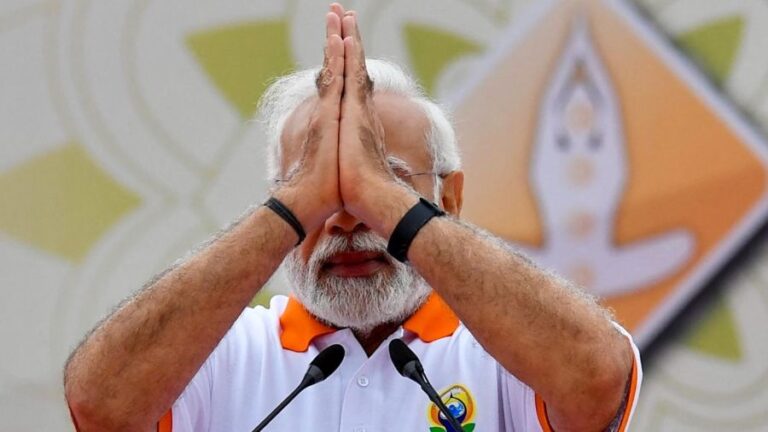Egypt: Outcome of UN Climate Change Conference
The United Nations Climate Change Conference (COP27), held in Sharm El Sheikh, Egypt, from November 6, just ended. However, it did not meet the official deadline (due to end on November 18) and was extended until November 20 due to Western obstruction. It was only then, after desperate debate and discussion, that a general document was adopted to establish fund to help poor nations cope with the extreme weather events caused by global warming as a result of the destructive use of natural resources and the enormous emission of harmful gases into the atmosphere by rich countries, especially in the West. This conference and the creation of the Fund launched a series of negotiations and discussions aimed at saving the planet from the catastrophic effects of climate change.
The decision finally taken by countries around the world to set up the Fund to help poor countries hard hit by the global warming is widely considered to be one of the most significant since the UN climate talks began 30 years ago. This was an unequivocal affirmation that poor countries with limited resources suffer most from extreme weather events such as floods, heat waves and storms, while industrialized countries, which have contributed most negatively to climate change, have an obligation to help. However, while government leaders, environmentalists and activists celebrate the establishment of such a Loss and Damage Fund, many questions remain, including how it will work.
In the early 1990s, the Alliance of Small Island States and a group of low-lying coastal countries began calling for a Loss and Damage Fund as the United Nations established a framework to address climate change at the international level. Since then, the idea has always been part of the annual UN climate summits. This was often talked about on the sidelines of many negotiations, insisted on by developing countries and activists, while rich countries, especially the West, led by the US, used their weight to downplay the idea. For the first time, COP27 put the issue on the agenda and made it central to the discussions.
For nearly three decades, rich developed countries, responsible for more than 90% of the carbon emissions that raise the temperature of the planet, categorically rejected the demand for such a Fund. This year’s agreement in Sharm El Sheikh, however, reflects what can be done when developing and poor countries remain united.
Molvin Joseph of Antigua and Barbuda, who heads the Alliance of Small Island States facing an existential threat amid rising ocean and sea levels, called the agreement a “victory for the world.” He rightly stated, “We have shown those who have felt neglected that we hear them, we see them, and we are giving them the respect and attention they deserve.”
Pakistan has recently become an example of how lives of millions of people can be disrupted when nearly two-thirds of the country was covered by floodwaters caused by climate change. This is why Sherry Rehman, Pakistan’s Minister of Climate Change, who played a key role in negotiating the establishment of the Fund, pulled no punches when she noted that the establishment of the Fund was not about giving away charity. Speaking on behalf of the Group of 77 coalition, which consists mainly of developing and poor countries, she said, “It is clearly a down payment on the longer investment in our joint futures.”
The Fund will initially rely on contributions from developed countries, private and public sources such as international financial institutions, with the possibility of other major economies joining in the future. The final text points to “identifying and expanding sources of funding,” as insisted upon by the EU, the US and other negotiators, suggesting that countries that are particularly polluting and deemed to be developing countries under the criteria should also contribute to the Fund.
During the negotiations, China said that the money for the new Fund should come primarily from developed countries, not from developing countries. But China has the advantage of voluntarily paying into climate funds if the US is the first to do so. For example, when President Barack Obama’s administration pledged $3 billion to the Green Climate Fund in 2014, China also paid $3.1 billion to the fund. But more details on who pays will be determined by the committee, which the Fund plans to launch within a year.
The agreement states that the Fund will help “developing countries that are particularly vulnerable to the adverse effects of climate change,” although there will also be an opportunity for middle-income countries severely affected by climate disasters to receive money. For example, Pakistan, which was devastated by the flood that left a third of the country under water, or Cuba, which was recently hit by Hurricane Ian, may be eligible for receiving aid from the Fund. According to David Waskow, Director of World Resources Institute’s International Climate Initiative, provisions will need to be made for how the Loss and Damage Fund will fit in with “other institutions, agencies that are out there doing humanitarian work, helping people rebuild, dealing with migration and refugee crises, dealing with food security, water security.” All these details will also be worked out by the committee next year.
Beyond mere financial assistance, the creation of the Fund is seen as a huge step forward. But it will ultimately depend, in part, on how quickly it can be created. At the final meeting on November 20, Lia Nicholson from Antigua insisted that the Transition Committee should be set up immediately and given a clear mandate so that there is no further dispute and Western countries cannot evade responsibility for global climate pollution. “This Loss and Damage Fund must become the lifeboat that we need it to be,” she said. At the same time, there is a trust deficit due to past unfulfilled promises, both from the UN and the West, especially the US. In 2009, for example, rich countries agreed to contribute $100 billion a year to help developing countries switch to green energy systems and adapt to climate change. So far, however, the initiative has never been fully funded, and if amounts have been allocated, they have been crumbs which have had little impact on negative global climate change.
One of the main reasons why rich countries, led by the US, have long opposed such a Loss and Damage Fund was the fear that it would then also open up long-term liability. Despite the creation of the Fund, the problem is still relevant, as evidenced by the way negotiators made sure that the wording of the Fund was silent on “liability” and that contributions were voluntary. The whole world has long seen, for example, how the United States says and promises one thing one day and then reneges on its promises the next day and does the opposite, with no international responsibility whatsoever.
As during the Cold War, the West is actively playing up the theater of mere ostentation, enlisting other countries as arenas in the fight against climate change. Switzerland, for example, plans to halve greenhouse gas emissions by 2030, but not by actually cutting them, which would inconvenience the Swiss, but by paying countries such as Ghana to cut emissions and giving them credit. The idea is that the Swiss government would pay for efficient lighting and cleaner cookers to be installed in Ghanaian homes and claim the resulting emissions reductions as its own. Switzerland is not the only Western country with such carbon offsetting schemes, which naturally crowds out effective climate action in rich countries.
The United States has unveiled a “new carbon trading scheme” that will supposedly help poor countries switch to cleaner energy. Under it, large Western companies would invest in renewable energy projects in the Global South in return for allowing them to continue emitting large amounts of greenhouse gases. As environmentalists point out, this is nothing more than another scheme to allow Western big business to continue polluting the environment and making big profits. But all this talk of “transition” in poorer countries is only meant to divert attention away from the West’s unwillingness to change its own economy and to shift the blame for climate problems to those least responsible.
It must be said that, despite the stubborn opposition of the US and other Western states, the creation of such a Fund could have implications, both legal and nominal, in climate circles and beyond. For example, several Pacific Island countries are pushing for the International Court of Justice to address the issue of climate change. They argue that international laws should be strengthened to protect their rights should their land be affected by rising sea levels, and it is only natural that the creation of the Loss and Damage Fund could bolster these arguments.







